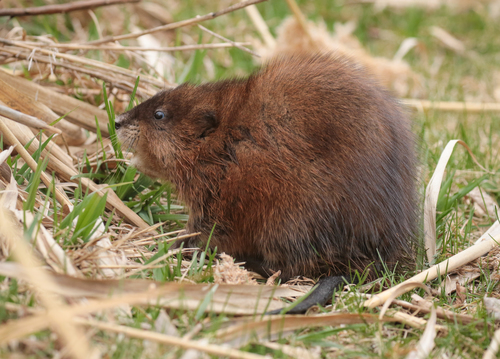
Muskrat
Ondatra zibethicus, or the muskrat, is a wetland engineer with its dense fur and webbed feet. It builds intricate lodges, reshaping aquatic habitats, and provides shelter for diverse species, showcasing its crucial ecological role.
3-4 years
Lifespan
700.0 g
Weight
Length: 41 - 63 cm; Height: 13 cm
Size
Brown, Black
Color
1 year
Age of Sexual Maturity
3 mph
Top Speed
Least Concern
Conservation Status
Stable
Population Trend
Distribution Range of the Muskrat
Ondatra zibethicus, commonly known as the muskrat, is native to North America. Its native geographical distribution includes most of Canada and the United States, extending from Alaska and northern regions of Canada down to northern parts of Mexico.
Muskrat's Habitat
Environmental Conditions
Muskrats predominantly inhabit wetlands, such as marshes, swamps, and along riverbanks and lakeshores. They are typically found in areas with abundant aquatic vegetation that provides both food and shelter. The climate in these areas varies considerably, from colder northern regions to milder southern areas, but muskrats are adapted to seasonal changes.
Ecological Niche
Muskrats play an important ecological role in their habitat, primarily as herbivores. They consume a wide range of aquatic vegetation such as cattails, water lilies, and various pondweeds. By feeding on and manipulating vegetation, they help maintain wetland ecosystems. Muskrats often share their habitat with other species like beavers, but they niche differently by primarily building lodges and burrows in banks.
Copyright @ Nature Style Limited. All Rights Reserved.
 English
English